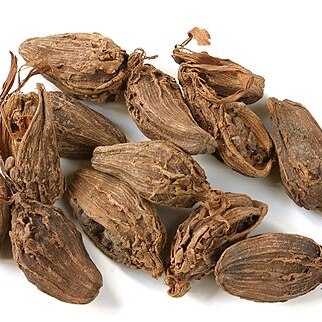| Therapeutic use
|
Asthma (fruit), Colic (fruit), Cough (fruit), Digestive system diseases (fruit), Eye infections (fruit), Headache (fruit), Hematologic diseases (fruit), Hemorrhage (fruit), Lung diseases (fruit), Mouth diseases (fruit), Nausea (fruit), Pharyngitis (fruit), Anti-poisoning (fruit), Pruritus (fruit), Skin diseases (fruit), Stomatitis (fruit), Taste disorders (fruit), Thirst (fruit), Tooth diseases (fruit), Tuberculosis, pulmonary (fruit), Ulcer (fruit), Vomiting (fruit), Disorder of head (fruit), Hypoglycemic agents (rhizome), Stomach diseases (rhizome), Hypoglycemic agents (root), Abdominal pain (seed), Anorexia (seed), Antidotes (seed), Antifungal agents (seed), Anti-inflammatory agents (seed), Antioxidants (seed), Antipruritics (seed), Aphrodisiacs (seed), Appetite stimulants (seed), Biliary tract diseases (seed), Bites and stings (seed), Bronchitis (seed), Colic (seed), Diarrhea (seed), Digestive system diseases (seed), Dysentery (seed), Dyspepsia (seed), Eyelid diseases (seed), Fever (seed), Gonorrhea (seed), Headache (seed), Hemorrhoids (seed), Liver diseases (seed), Lung diseases (seed), Mouth diseases (seed), Mouthwashes (seed), Neuralgia (seed), Periodontal diseases (seed), Pharyngitis (seed), Rectal diseases (seed), General tonic for rejuvenation (seed), Scorpion stings (seed), Skin diseases (seed), Snake bites (seed), Splenomegaly (seed), Stomach diseases (seed), Stomatitis (seed), Toothache (seed), Tuberculosis, pulmonary (seed), Vomiting (seed), Eye (unspecified), Neuralgia (unspecified), Purgative (unspecified), Stimulant (unspecified), Stomachic (unspecified), Inflammation (unspecified), Abdominal pain (unspecified), Analgesics (unspecified), Anorexia (unspecified), Antipruritics (unspecified), Antipyretics (unspecified), Appetite stimulants (unspecified), Bronchitis (unspecified), Colic (unspecified), Cough (unspecified), Diarrhea (unspecified), Diuretics (unspecified), Dysentery (unspecified), Dyspepsia (unspecified), Expectorants (unspecified), Fever (unspecified), Flatulence (unspecified), Gastrointestinal diseases (unspecified), Gonorrhea (unspecified), Halitosis (unspecified), Headache (unspecified), Heart diseases (unspecified), Hypnotics and sedatives (unspecified), Hypohidrosis (unspecified), Liver diseases (unspecified), Mental disorders (unspecified), Nausea (unspecified), Rectal prolapse (unspecified), Skin diseases (unspecified), Splenomegaly (unspecified), Syncope (unspecified), Thirst (unspecified), Toothache (unspecified), Ulcer (unspecified), Urination disorders (unspecified), Vomiting (unspecified), Wound healing (unspecified), Wounds and injuries (unspecified), Depurative (unspecified)
|

